Serena Barasi Encourages Community Science with Guam Youth
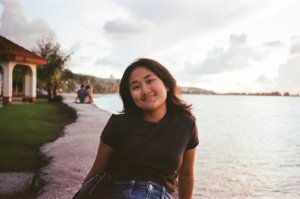
Growing up in Guam, we are always surrounded by nature–whether picnicking with family by the beach, hiking with friends on a Saturday, or admiring the sunset views from a favorite restaurant in Tumon. Yet, despite this constant immersion in nature, our environmental science classes rarely include locally relevant examples. In middle school and biology classes, I learned scientific concepts through examples from various states in the U.S., but it was not until taking an Environmental Biology course in my first year of college that I encountered biology through locally relevant examples. This shift significantly enhanced my learning experience, as connecting biological concepts to my home environment made it more meaningful and easier to grasp.
As an ecologist and science communicator, I believe using locally relevant examples is crucial for cultivating a sense of belonging in fields like biology and ecology. During my time as an NSF Navigating Home Fellow, I aimed to develop project that combined biological and ecological concepts with nearby environments. After brainstorming with STEMAP and the Department of Agriculture Forestry and Soil Resources Division – my Navigating Home agency–I concluded that a community science approach would effectively blend science with the local environment. We came up with the project called “Let’s Talk about Trees!” This initiative is designed to engage people in community science by inventorying urban trees in Guam, blending ecological education with hands-on involvement.
Specifically, “Let’s Talk about Trees!” introduces participants to fundamental concepts in restoration ecology while encouraging them to identify various trees in local parks, beaches, campus, and even their neighborhoods. The activity offers students a practical glimpse into the field of restoration ecology and involves them in an ongoing community science project. It also aims to raise awareness about ongoing management practices in Guam and highlight potential careers in biology, ecology, and forestry. Participants are provided with all necessary materials, including plant ID cards, clipboards, data sheets, tape measures, and pencils. Participants were then organized into randomized groups with assigned roles to promote equitable participation and encourage effective communication among team members. Once in their groups, students worked together in their roles to collect data on nearby trees. While this activity is straightforward, students may need some time to become comfortable identifying different trees and using the plant ID cards.
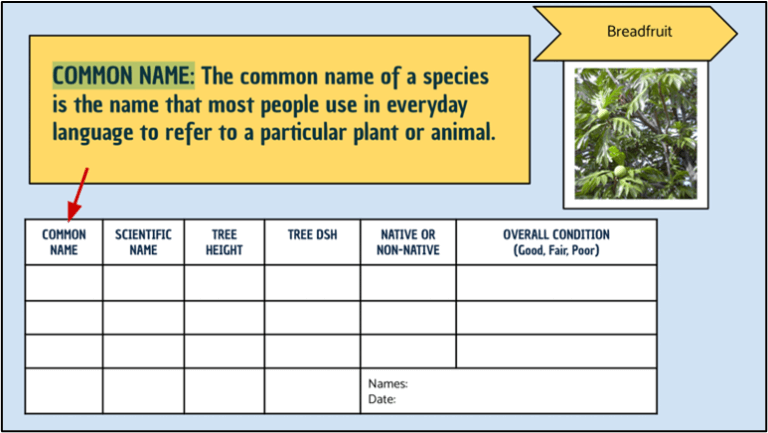
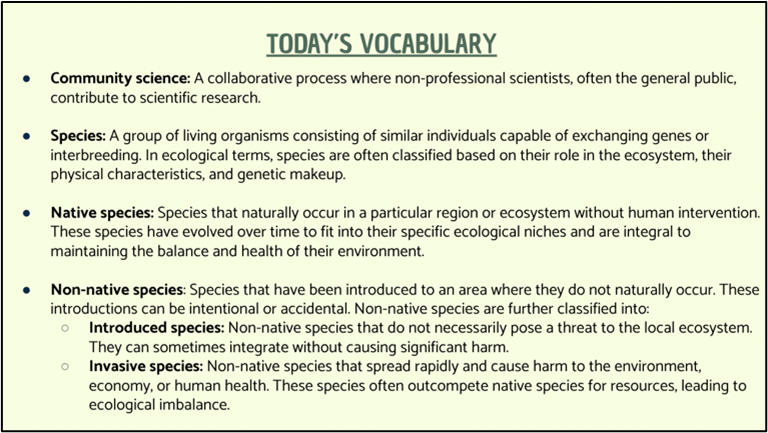
Feedback from participants and reviewers indicated that they enjoyed the activity because they were able to move around and interact with trees in nature. I think the activity could be improved by spending more time reviewing concepts in tree identification. For example, we could have talked about different leaf arrangements, leaf sizes, flowers, and so on. I hope to extend this work with my collaborators at the University of California, Santa Cruz by improving this model and developing tools for community science, I also plan to continue collaborating with the Guam Department of Agriculture to develop education and outreach materials that will contribute to the forest inventory of Guam.
Acknowledgements: I would like to thank the NSF Navigating Home team and STEMAP mentors, Andrew George and Corinne Ryan, for helping me develop this project. I would like to thank the University of Guam professor, Dr. Rachel Jolley, and the camp community Our Island, Our Future, for connecting me with the focal group and allowing an enriching experience.
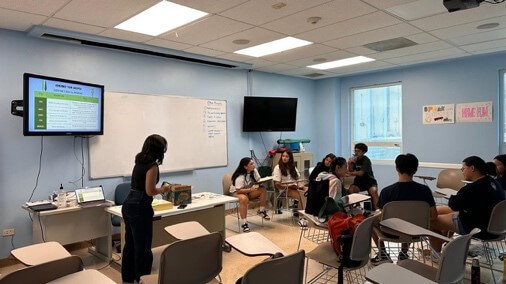
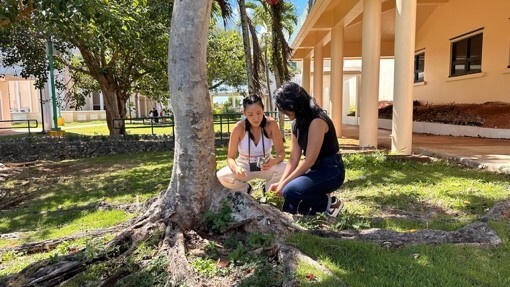
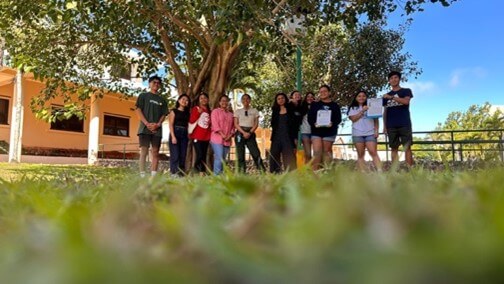
About the Blog
Discussion channel for insightful chat about our events, news, and activities.
Categories
Featured Posts
Tag Cloud
- STEMCAP (1)
- tattoos (1)
- dinosaurs (1)
- microscopy (1)
- conservation (2)
- education (1)
- Puerto Rico (2)
- bilingual (1)
- UoG (2)
- Guam (2)
- ethnobotany (1)
- environmental policy (1)
- student immersion (1)
- engineering (1)
- Virgin Islands (1)
- USVI (2)
- lionfish (1)
- children's home (1)
- marine ecology (1)
- youth (1)
- sustainability (2)
- Utah (1)
- Arizona (1)
- Nevada (1)
- southwest (1)
- virtual (1)
- project management (1)
- training (1)
- naturalist (1)
- forest (1)
- ecosystem (1)
- Spanish (1)
- library (1)
- Huntington's (1)
- medical science (1)
- Emmanuel Ngwoke (1)
